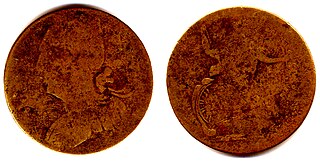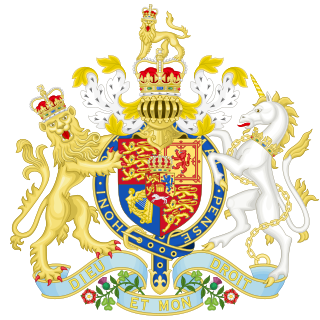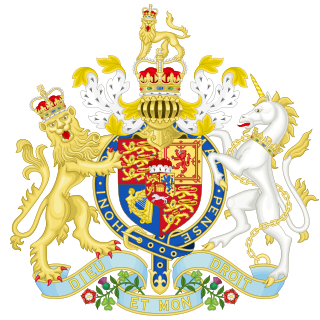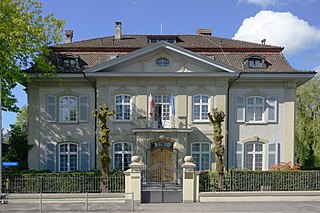 W
WForgery is a white-collar crime that generally refers to the false making or material alteration of a legal instrument with the specific intent to defraud anyone. Tampering with a certain legal instrument may be forbidden by law in some jurisdictions but such an offense is not related to forgery unless the tampered legal instrument was actually used in the course of the crime to defraud another person or entity. Copies, studio replicas, and reproductions are not considered forgeries, though they may later become forgeries through knowing and willful misrepresentations.
 W
WThe Admiralty Powers, &c. Act was a British act of parliament passed in 1865. It gained royal assent on 6 July 1865.
 W
WBlacksmith tokens are a form of evasion currency that was in circulation primarily in Lower Canada and Upper Canada along with neighboring areas, such as the northern parts of New York and New England in the mid-1820 to 1830s. They were not, strictly speaking counterfeits, but instead skirted around the laws of the time by being similar to officially circulating coinage, but bearing different legends, or bearing no legends or dates at all, so it could not be claimed that they were truly imitating circulating coinage fully. The tokens were designed to resemble worn examples of English or Irish copper coinage, most often with a crude profile of either George II or George III in profile on the obverse and an image of Britannia or an Irish harp on the reverse. They were typically underweight when compared to officially sanctioned halfpenny coinage, but were accepted along with many other unofficially issued tokens due to a lack of sufficient small denomination coinage in circulation at the time.
 W
WCatacomb saints were the bodies of ancient Christians that were carefully exhumed from the catacombs of Rome and sent abroad to serve as relics of certain saints from the 16th century to the 19th century. They were typically lavishly decorated with gold and precious stones.
 W
WTo counterfeit means to imitate something authentic, with the intent to steal, destroy, or replace the original, for use in illegal transactions, or otherwise to deceive individuals into believing that the fake is of equal or greater value than the real thing. Counterfeit products are fakes or unauthorized replicas of the real product. Counterfeit products are often produced with the intent to take advantage of the superior value of the imitated product. The word counterfeit frequently describes both the forgeries of currency and documents as well as the imitations of items such as clothing, handbags, shoes, pharmaceuticals, automobile parts, unapproved aircraft parts, watches, electronics and electronic parts, software, works of art, toys, and movies.
 W
WAn epedigree is an electronic document which provides data on the history of a particular batch of a drug. It satisfies the requirement for a drug pedigree while using a convenient electronic form.
 W
WThe Forgery Act 1830 was an Act of the Parliament of the United Kingdom. It consolidated into one Act all legislation imposing the death penalty for forgery. Two years later the death penalty was abolished for most of these offences, and for the remaining offences in 1837.
 W
WThe Forgery Act 1837 was an Act of the Parliament of the United Kingdom. It was one of the Acts for the Mitigation of the Criminal Law passed during the session 7 Will 4 & 1 Vict.
 W
WThe Forgery Act 1861 is an Act of the Parliament of the United Kingdom of Great Britain and Ireland. It consolidated provisions related to forgery from a number of earlier statutes into a single Act. For the most part these provisions were, according to the draftsman of the Act, incorporated with little or no variation in their phraseology. It is one of a group of Acts sometimes referred to as the Criminal Law Consolidation Acts 1861. It was passed with the object of simplifying the law. It is essentially a revised version of an earlier consolidation Act, the Forgery Act 1830, incorporating subsequent statutes.
 W
WThe Forgery Act 1870 is an Act of the Parliament of the United Kingdom. The whole Act, so far as unrepealed, was repealed by section 33(3) of, and Part I of Schedule 3 to, the Theft Act 1968. This Act was repealed for the Republic of Ireland by sections 1 and 2 of, and Part 4 of the Schedule to, the Statute Law Revision (Pre-1922) Act 2005.
 W
WThe Forgery Act 1913 was an Act of the Parliament of the United Kingdom.
 W
WThe Forgery and Counterfeiting Act 1981 is an Act of the Parliament of the United Kingdom which makes it illegal to make fake versions of many things, including legal documents, contracts, audio and visual recordings, and money of the United Kingdom and certain protected coins. It replaces the Forgery Act 1913, the Coinage Offences Act 1936 and parts of the Forgery Act 1861. It implements recommendations made by the Law Commission in their report on forgery and counterfeit currency.
 W
WThe Forgery of Foreign Bills Act 1803 is an Act of the Parliament of the United Kingdom. Prior to its repeal in 2013, it created offences of forgery of foreign instruments in Scotland.
 W
WThe Forgery, Abolition of Punishment of Death Act 1832 was an Act of the Parliament of the United Kingdom of Great Britain and Ireland. It abolished the death penalty for all offences of forgery, except for forging wills and certain powers of attorney.
 W
WThe security features governing the security of an identity can be divided into three levels of security, i.e. Level 1 Security (L1S) (Overt), Level 2 Security (L2S) (Covert) and Level 3 Security (L3S) (Forensic). The three levels of security, in combination, provide comprehensive security coverage for identities and related documents to ensure their validity and authenticity. These are typically used to protect identity information on crucial documents such as identity cards, driving licenses and passports to ensure originality and accuracy of the identities they represent. The diagram below illustrates the different levels of security and how they ensure complete security coverage of an identity.
 W
WŁadoś Group, Bernese Group is a name given to a group of Polish diplomats and Jewish activists who during Second World War elaborated in Switzerland a system of illegal production of Latin American passports aimed at saving European Jews from the Holocaust.
 W
WThe Lingwell Gate coin moulds are a group of Roman, clay coin moulds used in the forgery of coinage found at Lingwell Gate between 1697 and 1879. As of April 2021, there were 288 confirmed moulds in UK museums.
 W
WLottery fraud is any act committed to defraud a lottery game. A perpetrator attempts to win a jackpot prize through fraudulent means. The aim is to defraud the organisation running the lottery of money, or in the case of a stolen lottery ticket, to defraud an individual of their legitimately won prize.
 W
WMobile tower rental business offers are a new form of mass marketing fraud in India. These frauds are unique to the Indian subcontinent. Mass-marketing fraud is defined as fraud committed via mass communication media using the telephone, mail, and the Internet.
 W
WA photocopier is a machine that makes copies of documents and other visual images onto paper or plastic film quickly and cheaply. Most modern photocopiers use a technology called xerography, a dry process that uses electrostatic charges on a light-sensitive photoreceptor to first attract and then transfer toner particles onto paper in the form of an image. The toner is then fused onto the paper using heat, pressure, or a combination of both. Copiers can also use other technologies, such as inkjet, but xerography is standard for office copying.
 W
WSecurity printing is the field of the printing industry that deals with the printing of items such as banknotes, cheques, passports, tamper-evident labels, security tapes, product authentication, stock certificates, postage stamps and identity cards. The main goal of security printing is to prevent forgery, tampering, or counterfeiting. More recently many of the techniques used to protect these high-value documents have become more available to commercial printers, whether they are using the more traditional offset and flexographic presses or the newer digital platforms. Businesses are protecting their lesser-value documents such as transcripts, coupons and prescription pads by incorporating some of the features listed below to ensure that they cannot be forged or that alteration of the data cannot occur undetected.
 W
WThe Substitution of Punishments of Death Act 1841 was an Act of the Parliament of the United Kingdom.
 W
WThe Synodic Act on the heretic of Armenia, the monk Martin is a forged document (act) created at the beginning of the 18th century by Dimitry of Rostov shortly before his death to be used against the Old Rite, and it was actively used by the missionaries of the Russian Orthodox Church during the Synodal Period in an attempt to convert the Old Believers. The main character of the Synodic Act is Martin Armenin or Martin the Armenian - a heretic and a monk. Martin Armenin was included as the name of a true person in many authoritative historical monographs and in liturgical texts by the Russian Orthodox Church.
 W
WThe Vexator Canadiensis tokens are thought to be politically satirical tokens produced in either Quebec City or Montreal sometime in the 1830s. The tokens present a very crude image of a vaguely male bust on their obverse, and a female figure on the reverse. The legends on either side were deliberately designed so that they are hard to definitively read, but are commonly known as the "vexators" based on a common interpretation of its obverse legend. Depending on the interpretation of the inscriptions, they can either be taken as a form of satirical protest against either an unpopular Upper Canada governor or William IV as a "tormentor of Canada", or more simply, depicting a fur trapper. Since both interpretations are possible, this ambiguity would allow the issuer from escaping being cited for sedition.